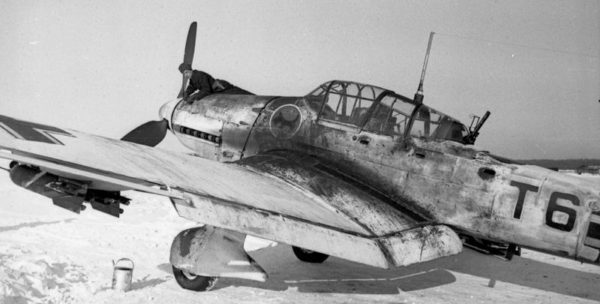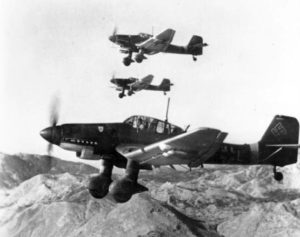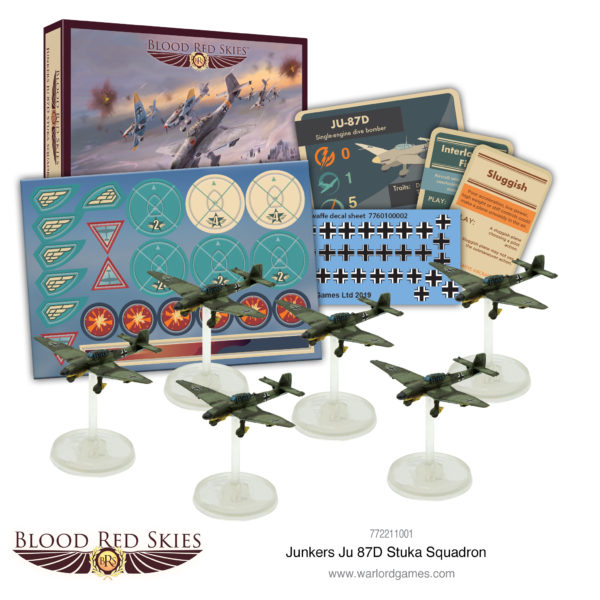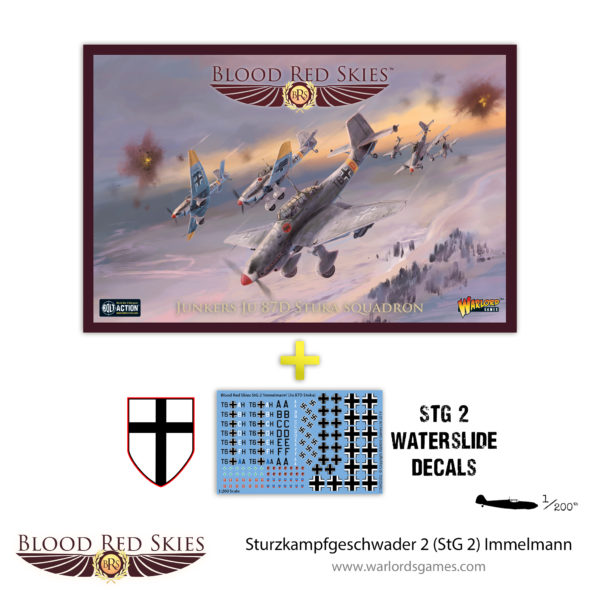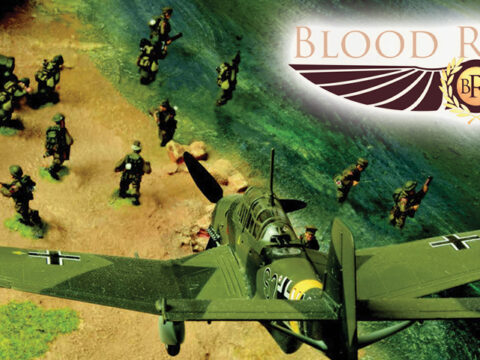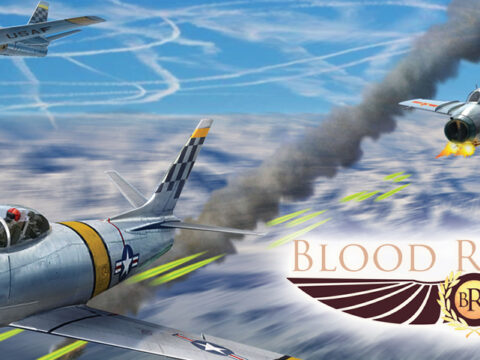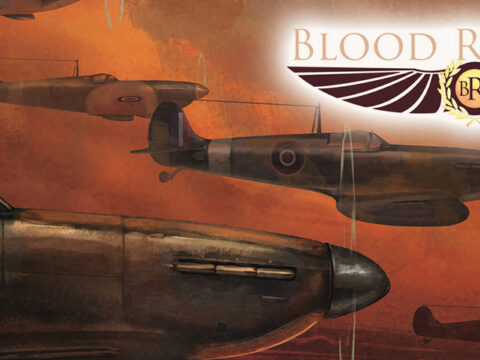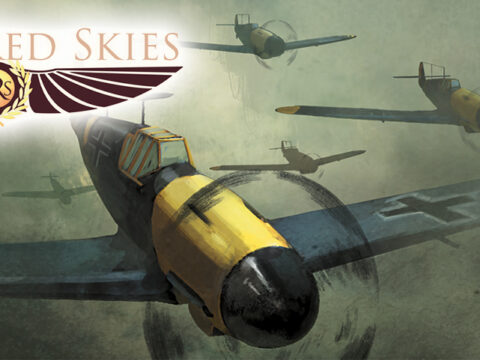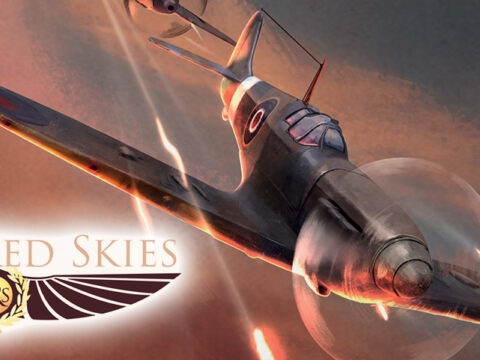Heralded by the wail of Jericho’s Trumpet, the ground-attack arm of the Luftwaffe screams into battle with the arrival of the Junkers Ju-87D Stuka in Blood Red Skies!

Designed in the early 1930s, influenced by the experiences of Ernst Udet and the experiments undertaken by various nations during the Inter-War years, the Stuka was an all-metal dive bomber, capable of some truly astounding aerobatics.
With its unique gull-wing design and revolutionary dive-breaks, the Stuka was capable of an almost-vertical dive, allowing it to deliver its deadly payload of 50kg and 250kg bombs with unnerving precision. Simply built and tremendously rugged, it fought on every front of the second world war from the outset, spearheading the German blitzkrieg as a kind of flying artillery.
The G-forces created by a diving Stuka caused 50% of pilots to lose vision or blackout entirely, so the aircraft was fitted with an automatic pull-out system that would activate upon the activation of the bomb release or dive brakes.
Stukas dropped the first bombs of the second world war, launching strikes against Polish railway bridges over the Vistula – 11 minutes before the official declaration of war. The campaigns in Poland, Norway, France and the Low Countries were all supported by swarms of shrieking Stukas, neutralising enemy armour support and disrupting shipping.
During the Battle of Britain, it became apparent that the Stuka was horrendously vulnerable to enemy fighters. Its defensive armament consisted of a single 7.92mm machinegun, and it was unable to keep up with the Bf109s assigned to escort it.
This vulnerability would plague the Stuka for the rest of its career – in areas where air superiority could not be established, the ground attack formations suffered heavy casualties. As the tide turned against the Axis and Allied air power grew in strength during 1942 and 43, it became steadily less effective. By early 1944, it had been supplanted by Fw 190s for ground-attack work, but it remained in service for anti-shipping operations.
In October 1943, the Luftwaffe began operations against the Soviet Black Seas Fleet. It caught three of the fleet’s Leningrad-class destroyers returning from their bombardment of the Crimean peninsula and sunk all three vessels in two successive attacks. Even at this late stage of the war, the Stuka was still a formidable foe for targets outside of friendly air cover.
Sound the Jericho Trumpets!
Gather your Ju-87 Stukas from our web store for your battles this weekend!

